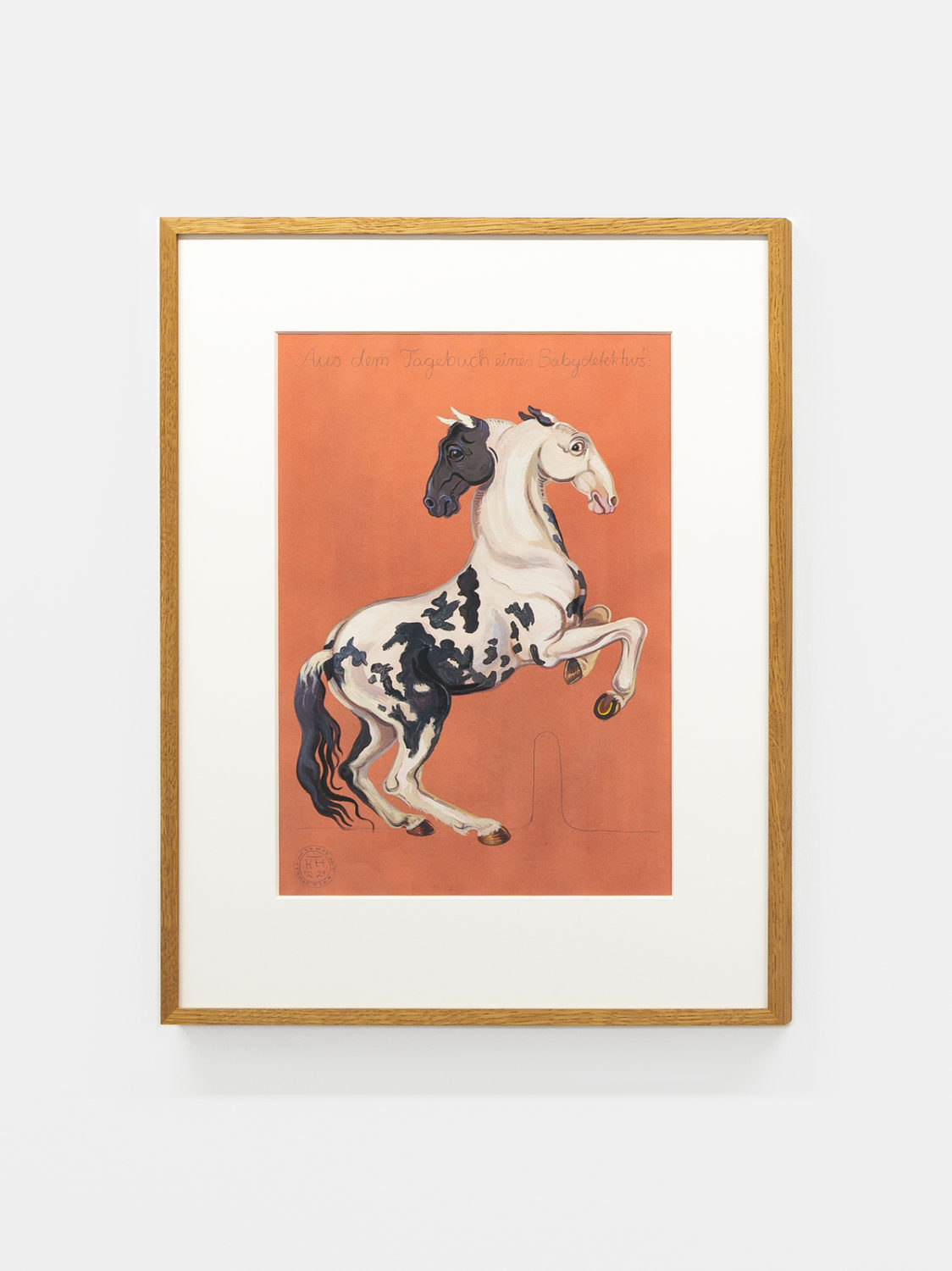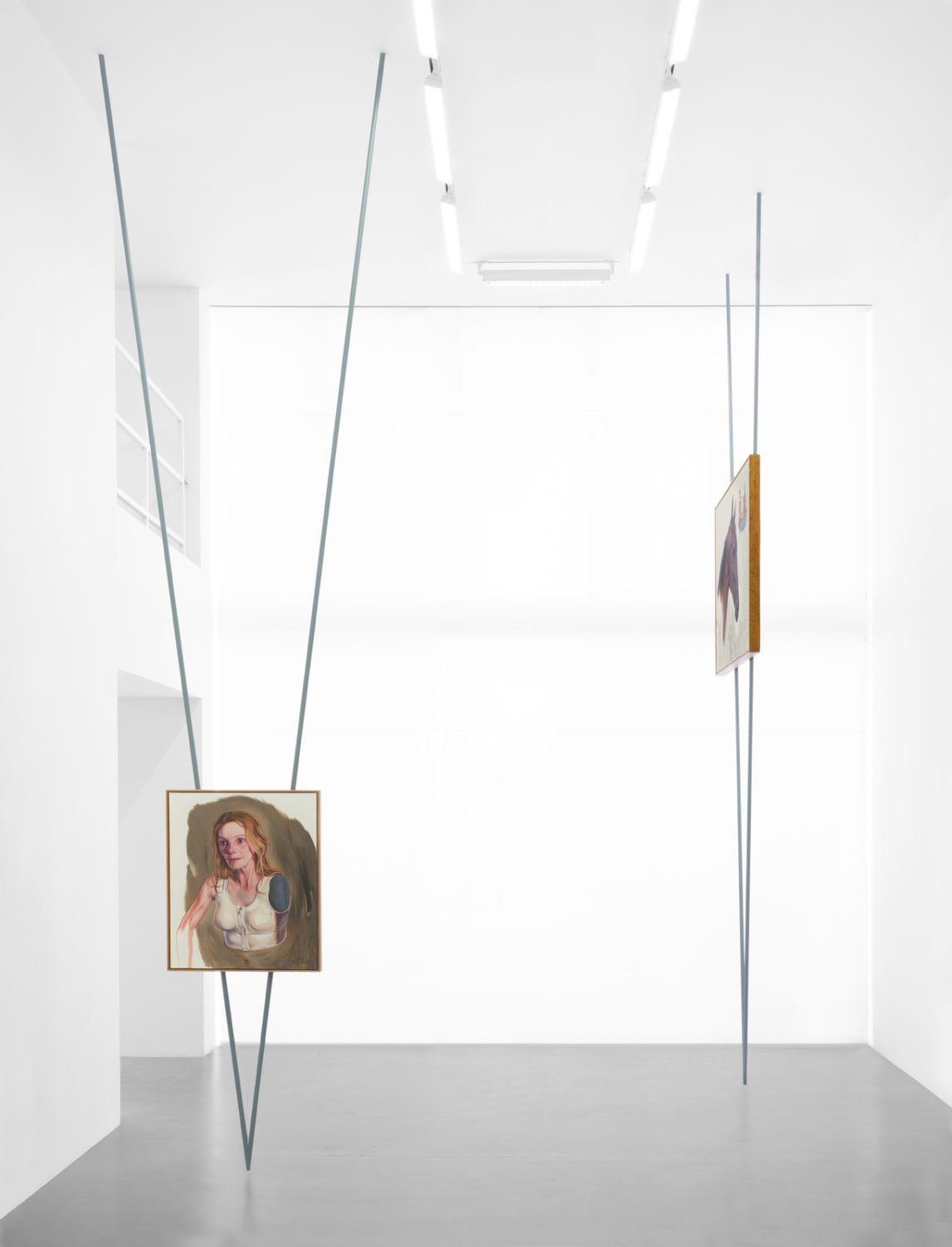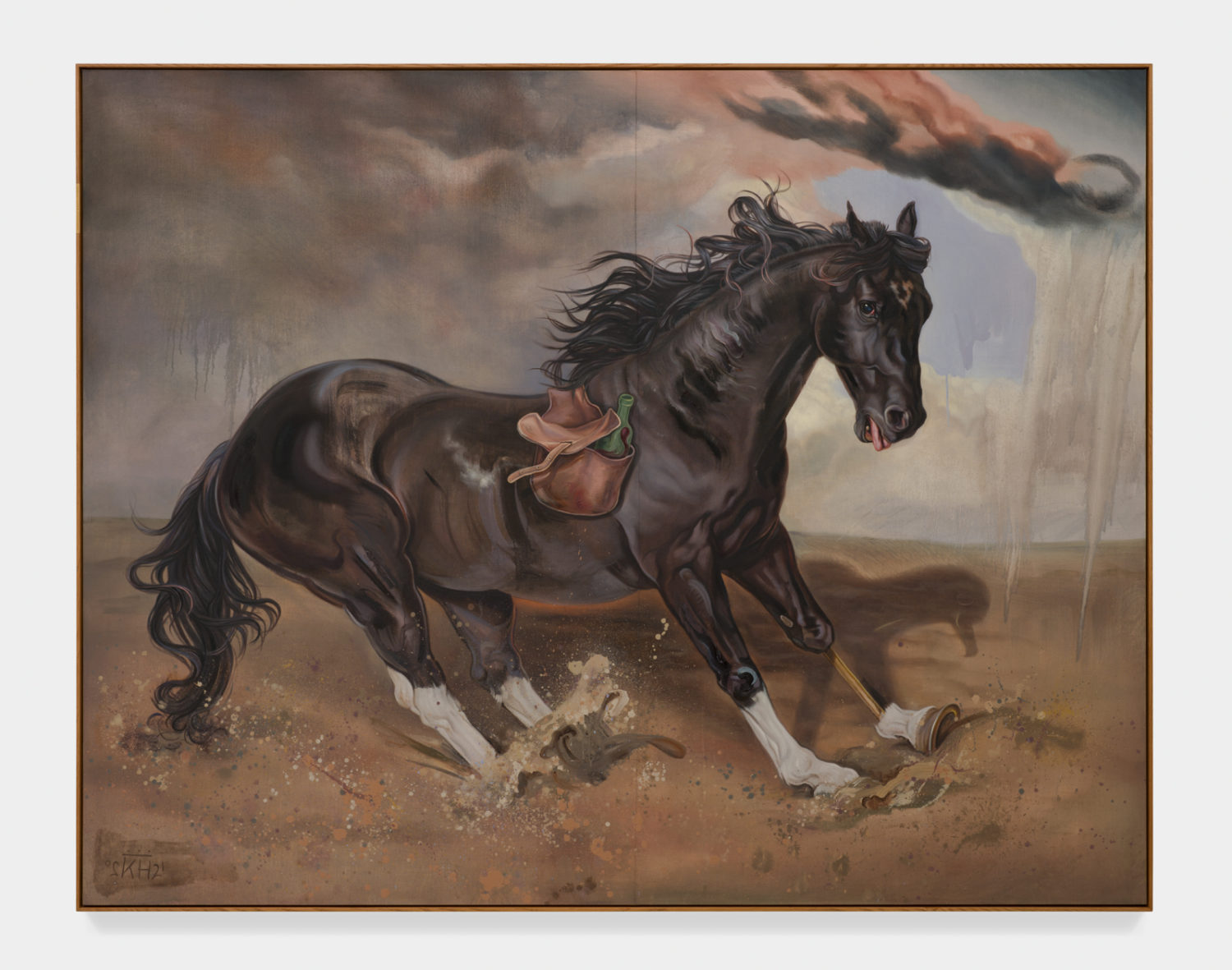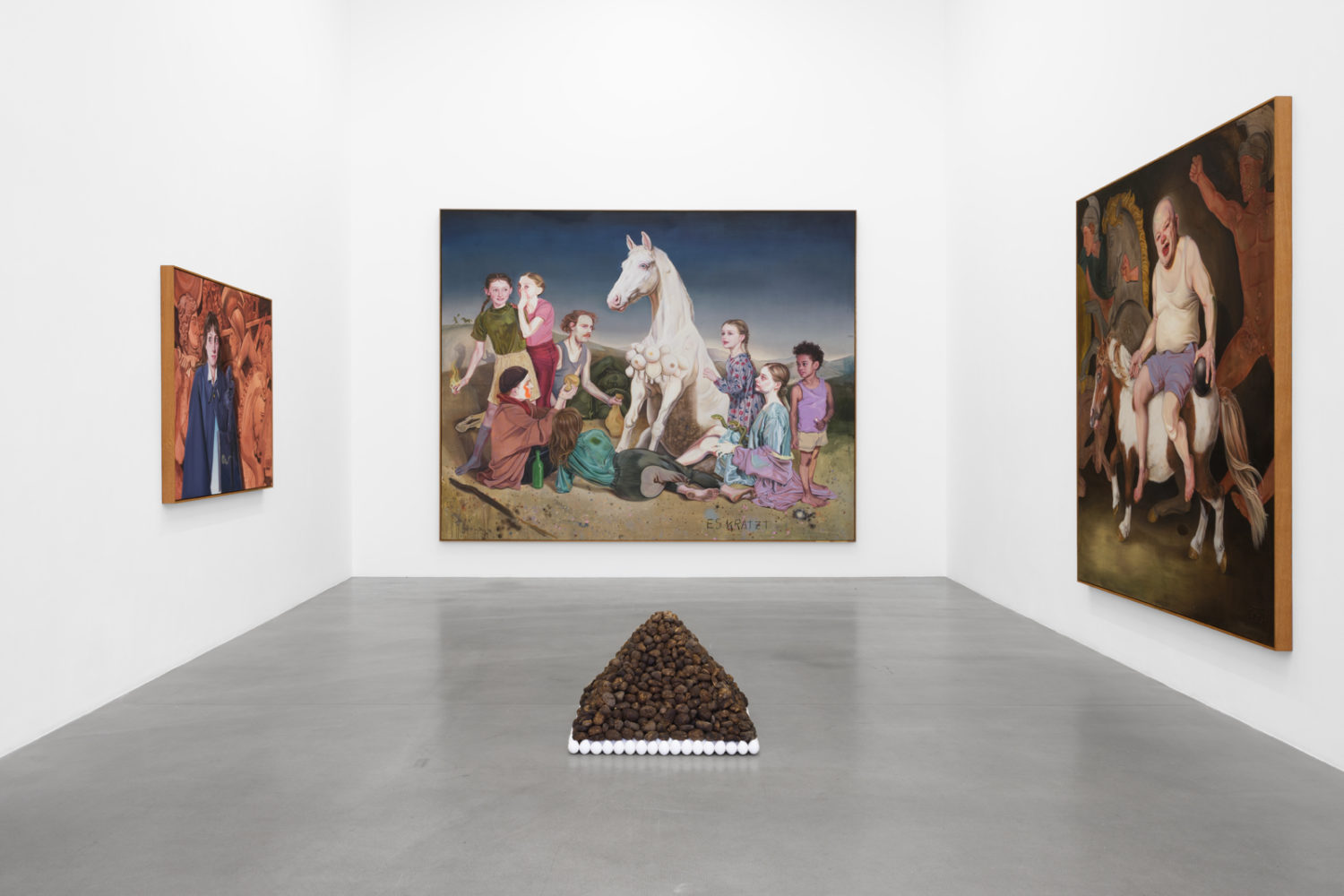Interview: Kati Heck On Reconceiving The Horse As An Expression Of Feminine Resistance
By Something CuratedIn her second exhibition with Sadie Coles HQ, now open and running until 10 July 2021 at 1 Davies Street, Düsseldorf-born Pulle-based artist Kati Heck presents a new group of paintings and drawings which centre on the motif of the horse – both as a historical revenant and a metaphor for the human psyche. In precisely executed yet open-ended scenes, she subverts the traditional associations of the subject – above all, the horse as a symbol of masculine power and prestige – and reconceives it as an expression of feminine resistance. Heck’s new paintings hang on free-standing triangles of metal pipes, seemingly transposed off the gallery walls so as to hang mid-air. The ingrained symbolism of the horse is likewise transposed into surreal, allegoric scenarios. To learn more about the new show and the thinking behind the compelling works exhibited, Something Curated spoke with Heck.

Something Curated: Can you give us some insight into your background and how you became interested in making art?
Kati Heck: My parents both have artistic professions and they supported me from early on. I was always drawing and making paintings. When I was about 16 I got a book on Basquiat and became totally fascinated. Me and my friend Julia Wlodkowski, who still plays a big role in my works, would experiment with different mediums, including sound, to make works together. We had a great art teacher in high school who made us study Magritte, Dix and Beuys for a long time. Perhaps it was also the romantic idea of being an artist and all the imagined wildness that comes with it that made me follow painting at the Royal Academy of Fine Arts Antwerp.

SC: What is the thinking behind the selection of works included in your new exhibition at Sadie Coles HQ?
KH: In my mind this show works as a bud formation and a portrait of refusal. I wanted to give a strong feminist message and knew that I wanted to paint horses to represent that idea. Throughout history horses have had to fill in where men were too weak or unable, which puts the horse on an equal footing with women. So I looked into art history to investigate the representation of horses through the centuries. Of course you find the Amazons, Napoleon, Stubbs etc. I wanted my horse not to be ridden on. And it had to become something else than what has already been done. While preparing for the show I met a dark brown mare that had just given birth. She carried such a wisdom and grace, and there was a melancholy to her – it was a fascinating encounter. I took some pictures and decided to paint her, and also to make a portrait of my own mother for the show. Knowing the people, animals or objects I paint is important to me. I need to have a relationship with them. It makes it a deeper and more interesting investigation and you can put more love into it.

SC: Could you expand further on the reoccurring motif of the horse present throughout the show?
KH: The idea for the show came from a drawing I made years ago of a horse in the pose of refusal. The words “Macht” and “Los” are written above and beneath it. “Macht” translates to power, and “los” means “come on”. In combination it is “Machtlos”, powerless. I am interested in the relationship between power and powerlessness. The horse itself, as well as man’s relationship to the horse, in my mind embodies this conundrum. Through art the image of the horse has been used as a symbol of power and powerlessness. Kings upon stallions, paupers without one. It’s often used to support or even prove the manliness of men. But the horse is a symbol of female power, and the potential for the refusal to continue along these tropes. I wanted to offer the horse as a maternal, female and fertilising symbol. The work “Fond”, a pyramid of horse apples (horse manure) placed on a pedestal of white eggs, works as a super female fertilizer. And a wink, a “Hauruck”, towards the viewer and Marcel Broodthaers.

SC: What is the significance of the exhibition’s title, Bonnie Bonne Bon?
KH: I never wanted to be seen as a female painter in the past. It didn’t interest me at all. The work should speak for itself. A great work is a great work. But lately I had to change my mind on that. The circumstances demand a different approach. I was playing around with the words Bonnie Lass… and came to this lollipop Bonbon thing that is formed of different languages, has a good rhythm, and is nothing and much at the same time. Men are easily intimidated when you start about feminism. So the title needed to be inviting, not frightening.

SC: How do you think about your work in relation to art history?
KH: Art history functions as a rich reference aid. Playing around with motifs, colours and compositions that have been done in the past, and have proven to work, is a part of my investigation and toolbox. I’m especially fascinated by the Middle Ages. The humour in it is incomparable.
SC: What are you working on currently and how has the pandemic impacted your work or way of operating?
KH: I am preparing a show at the Tim Van Laere Gallery in Antwerp for next year in May. It will be something with Neanderthals, so I am doing research and drawings to get a better picture of what I want it to be. The pandemic hasn‘t changed much of my way of operating. I’m usually just in my studio. But more and more I have developed a deeper disgust towards the right wing politicians, and also right wing media, over the last year, so that definitely played a bigger role in my works since then. Painting Neanderthals should speak for itself in that sense.
Feature image: Kati Heck, Bonnie Bonne Bon – come on, sense!, 2021. Credit: © Kati Heck, courtesy Sadie Coles HQ, London. Photo: Pieter Huybrechts